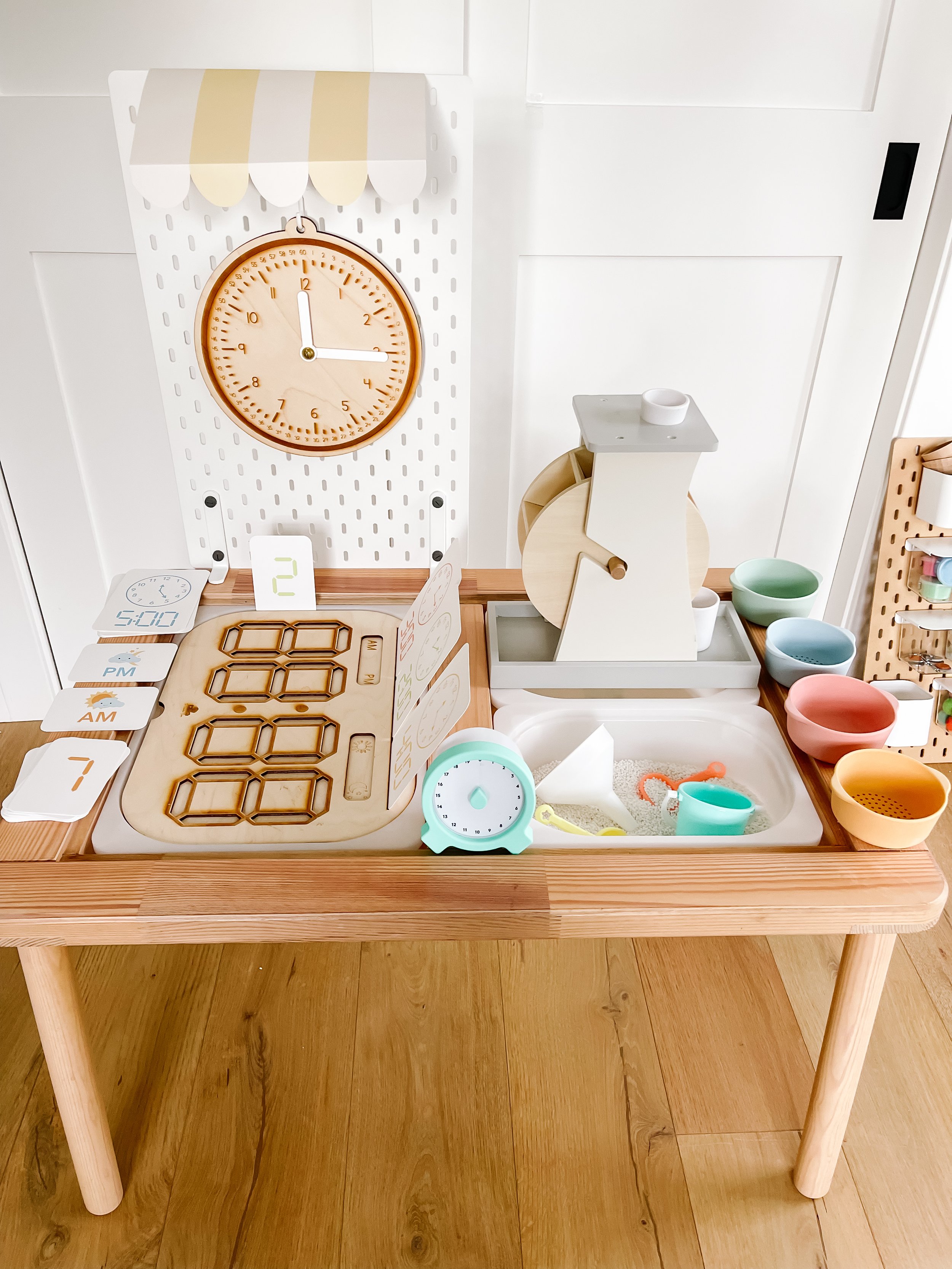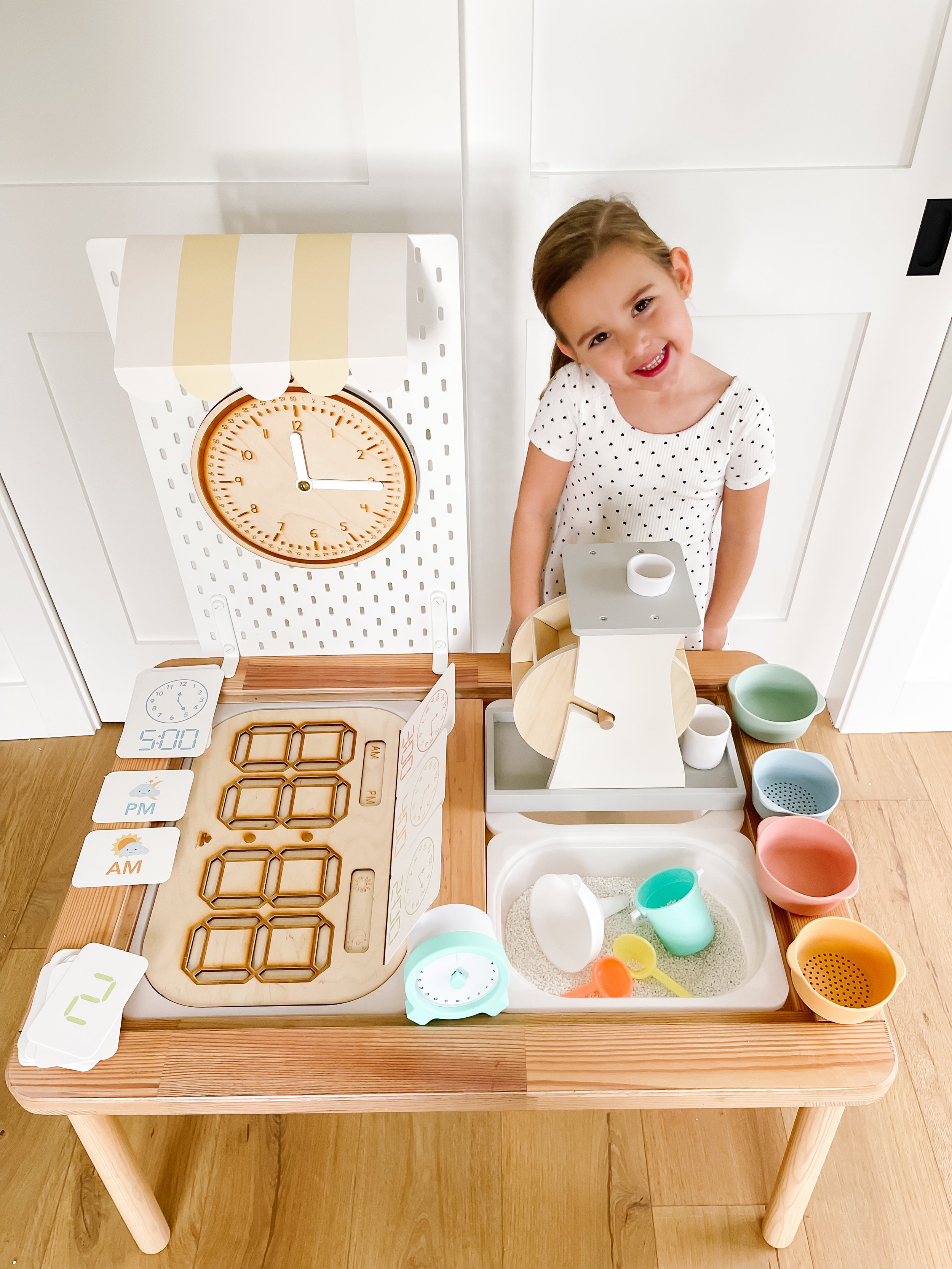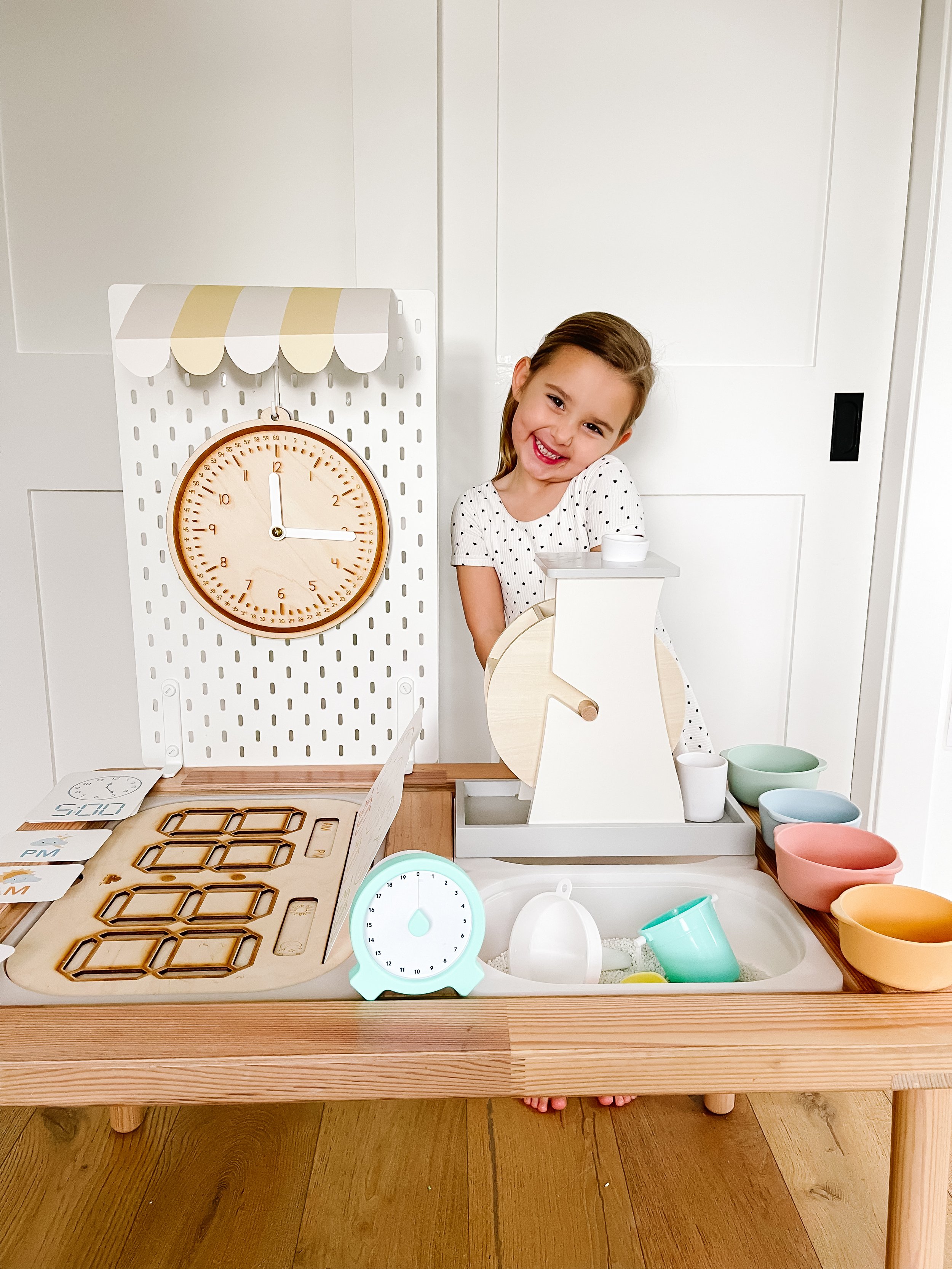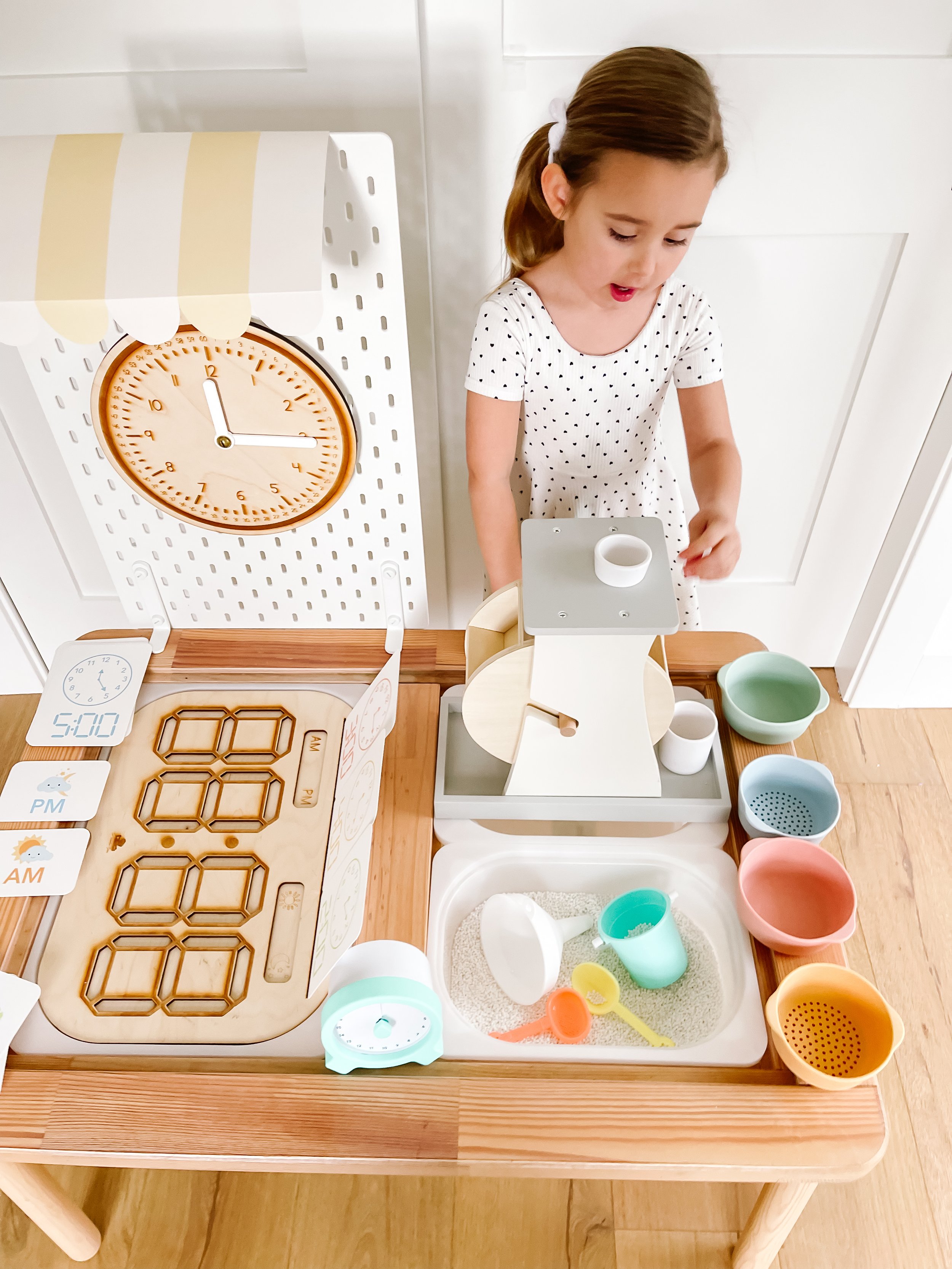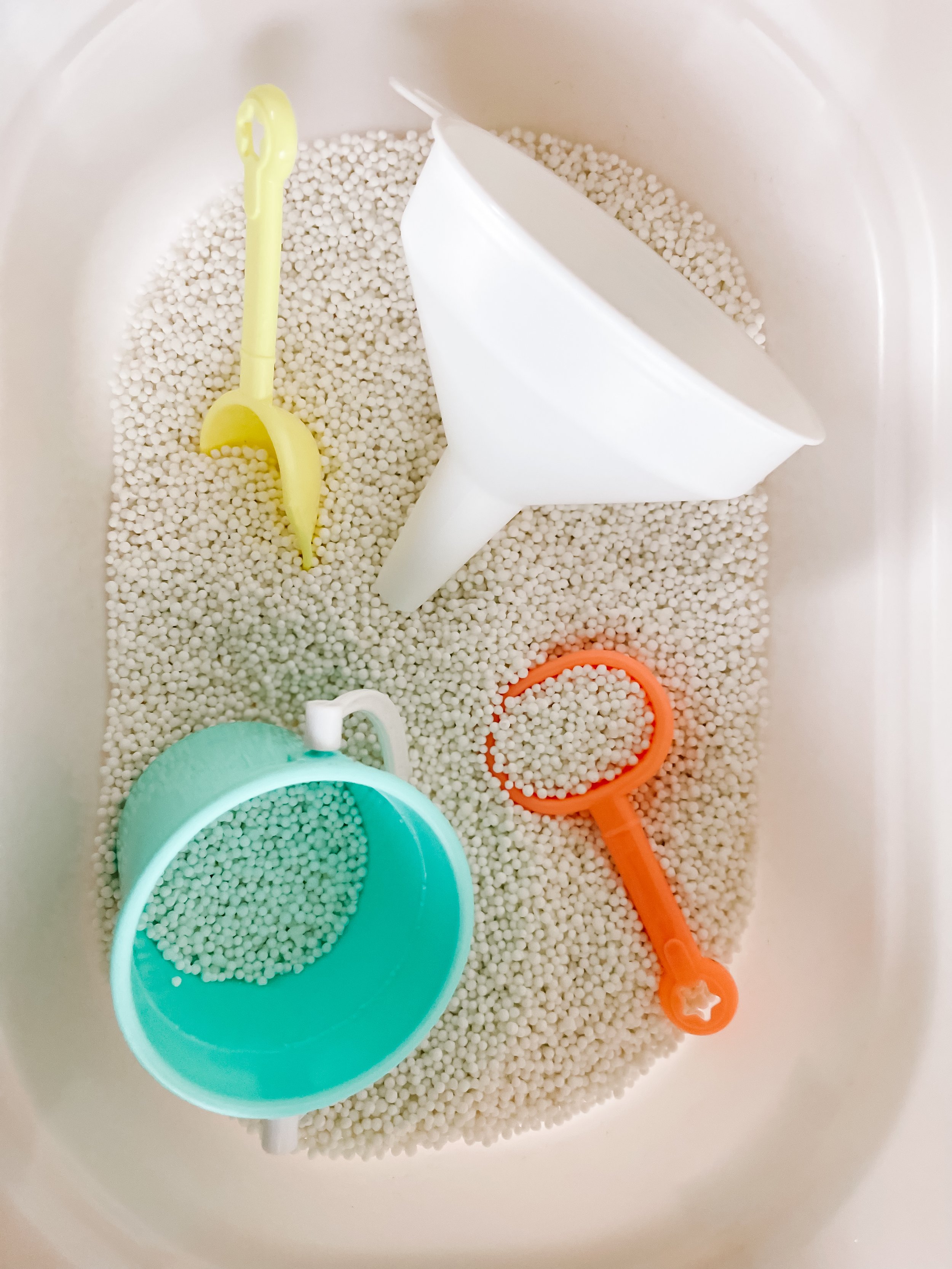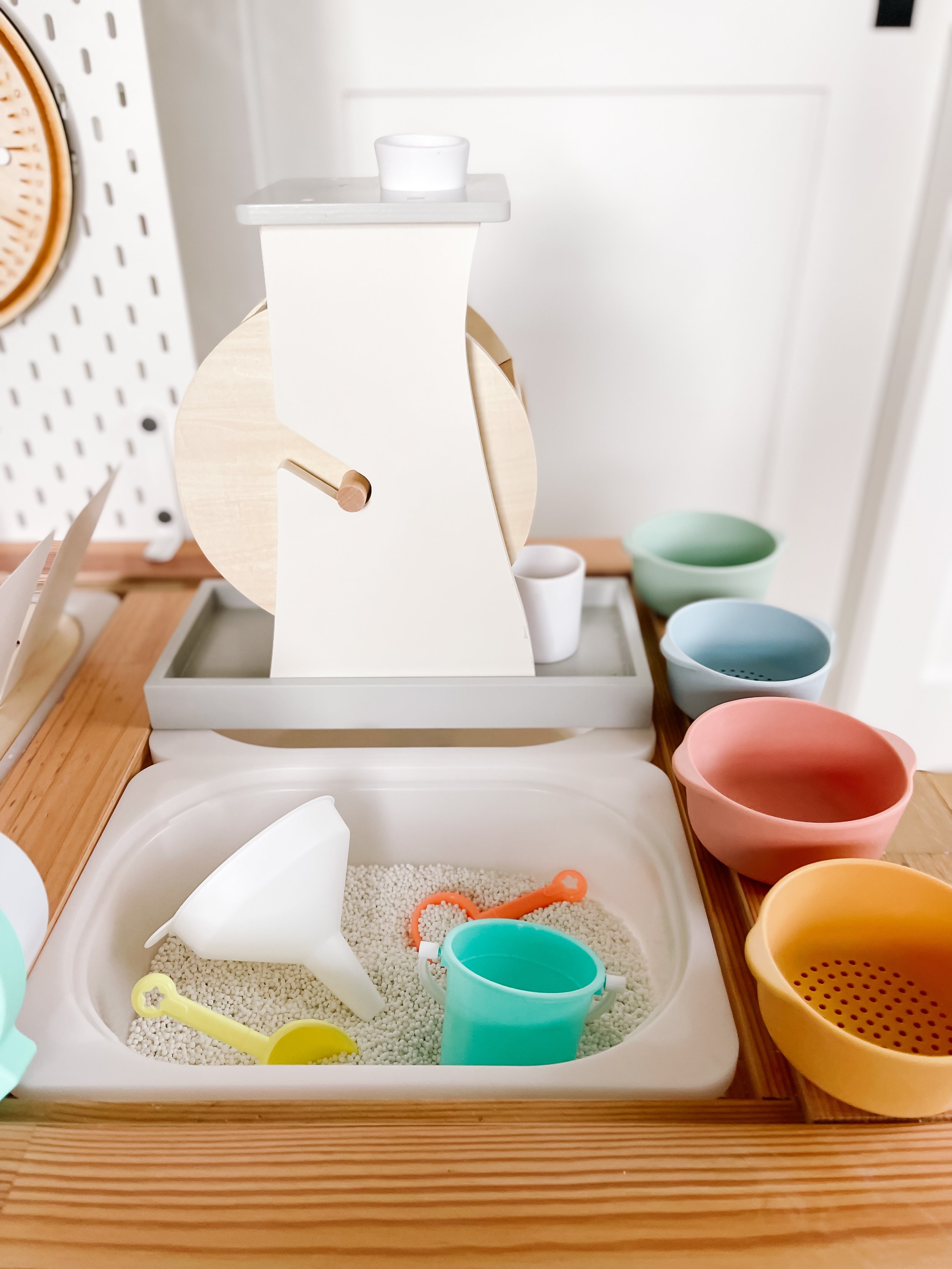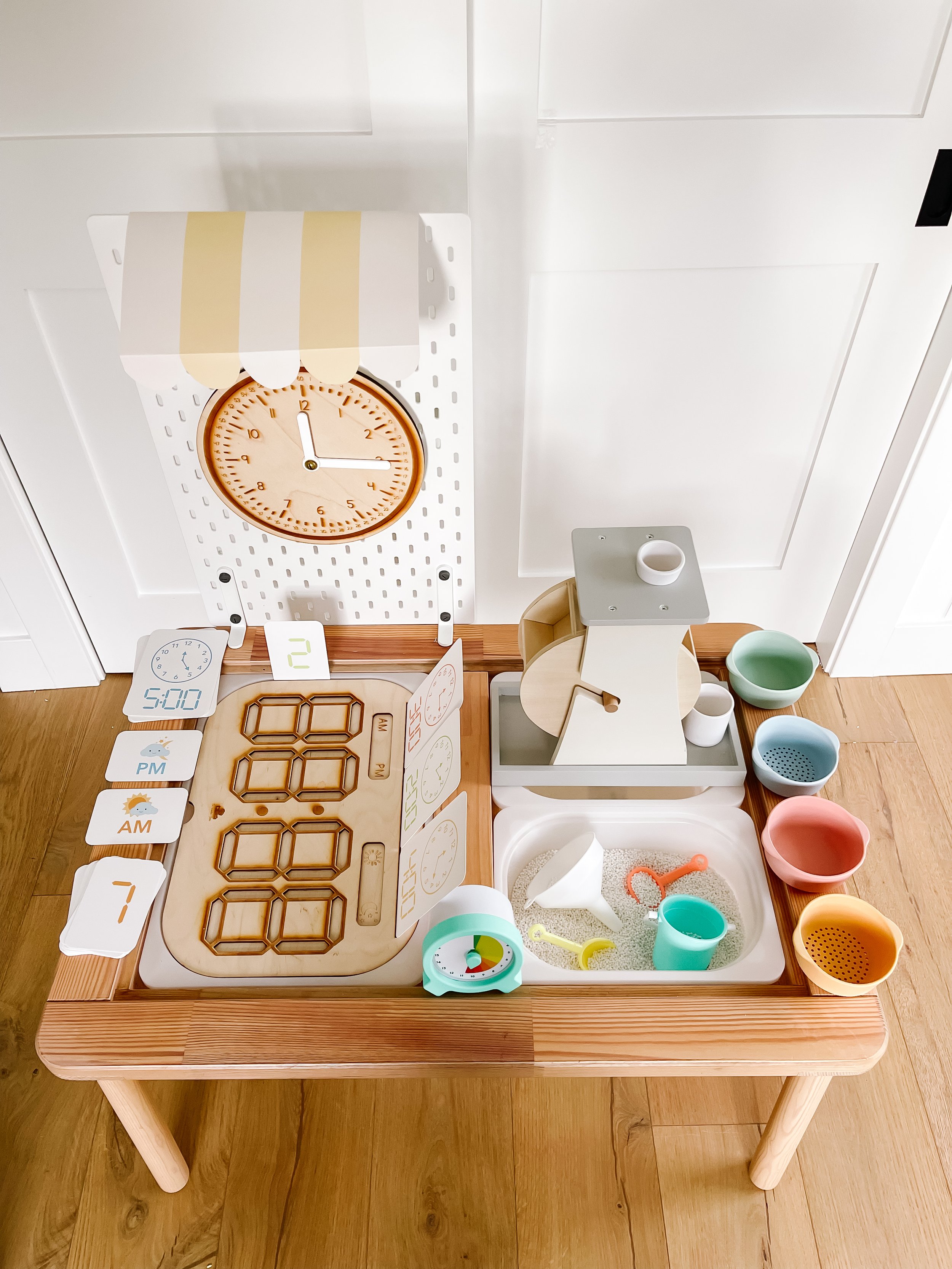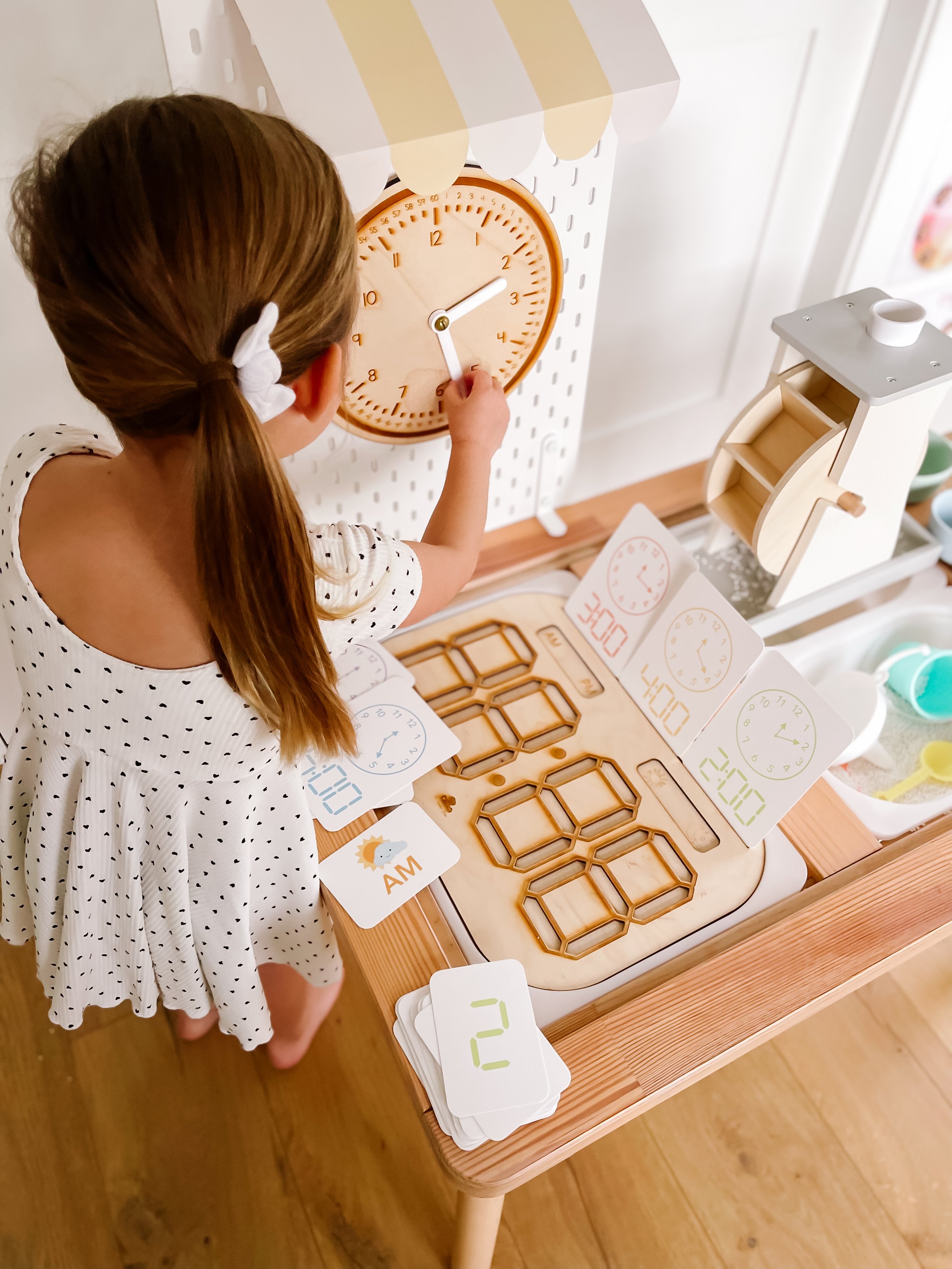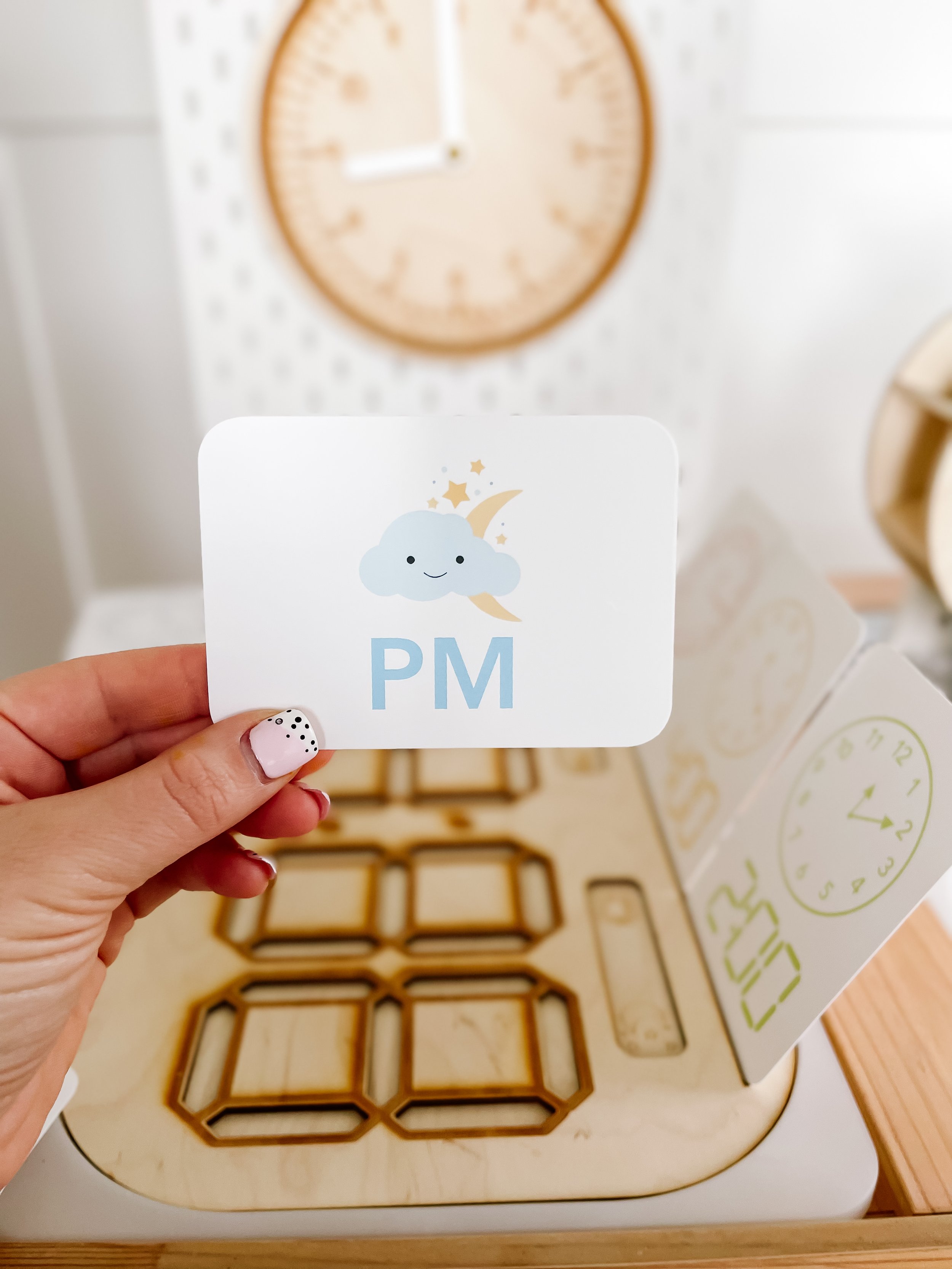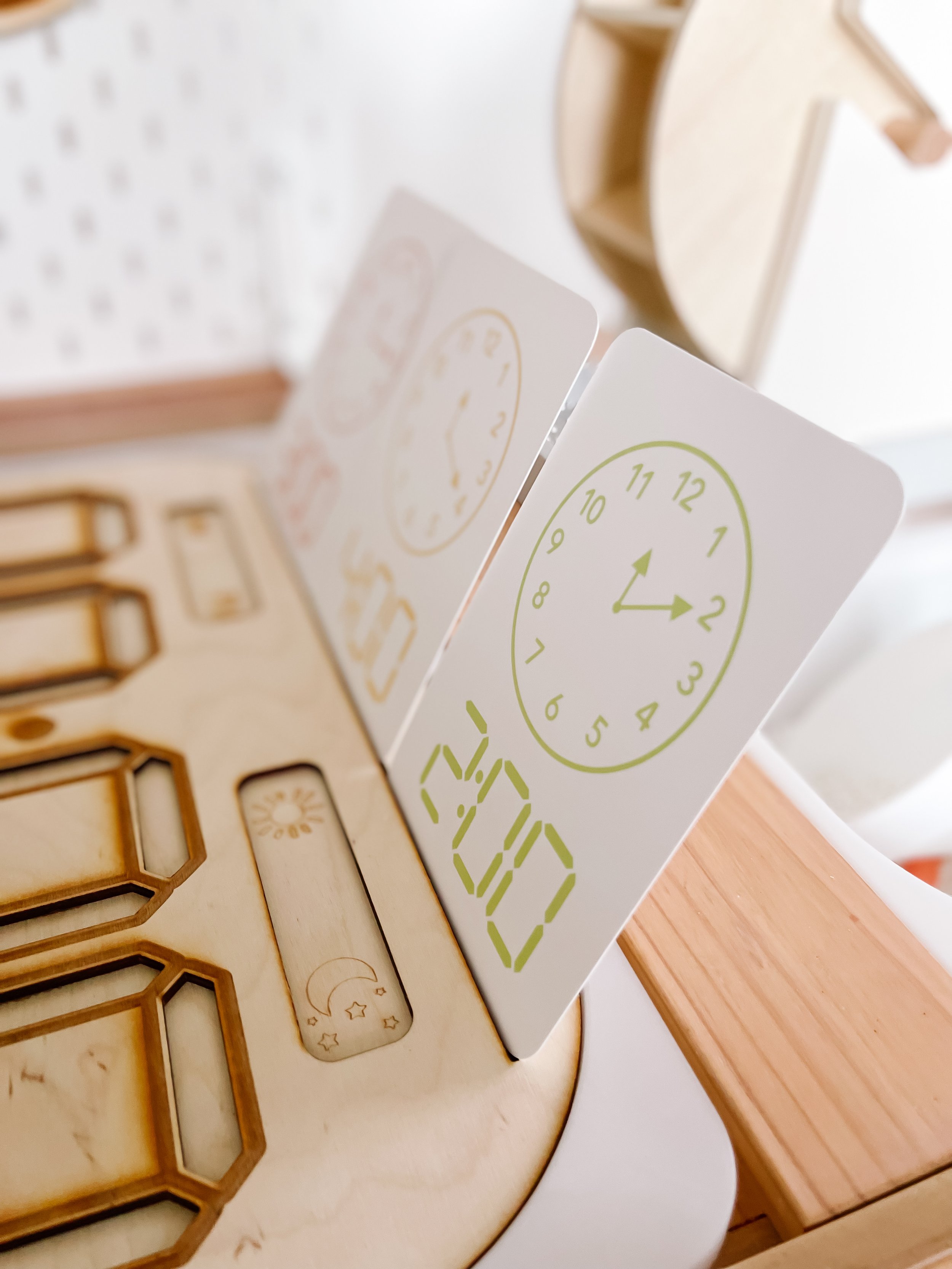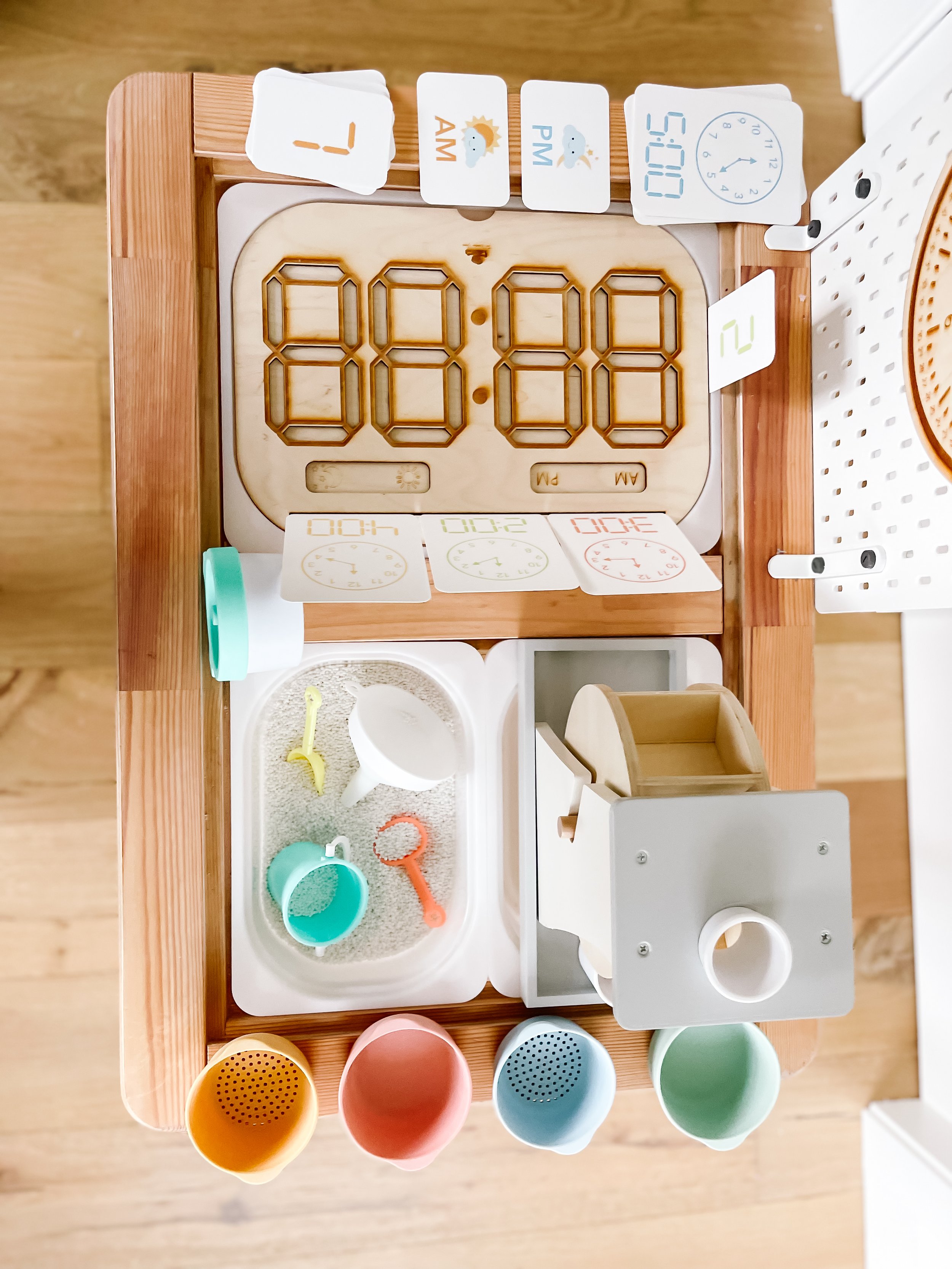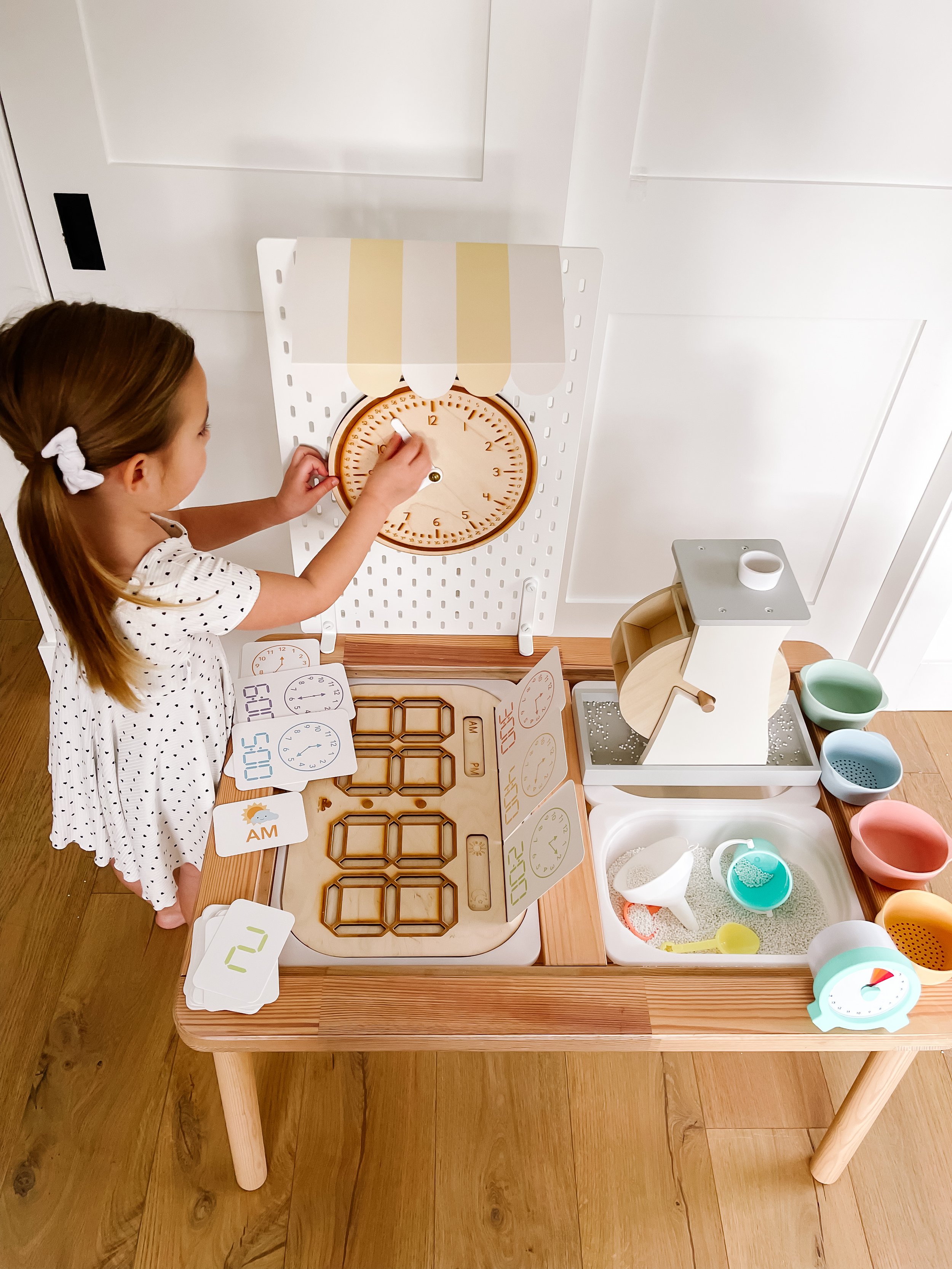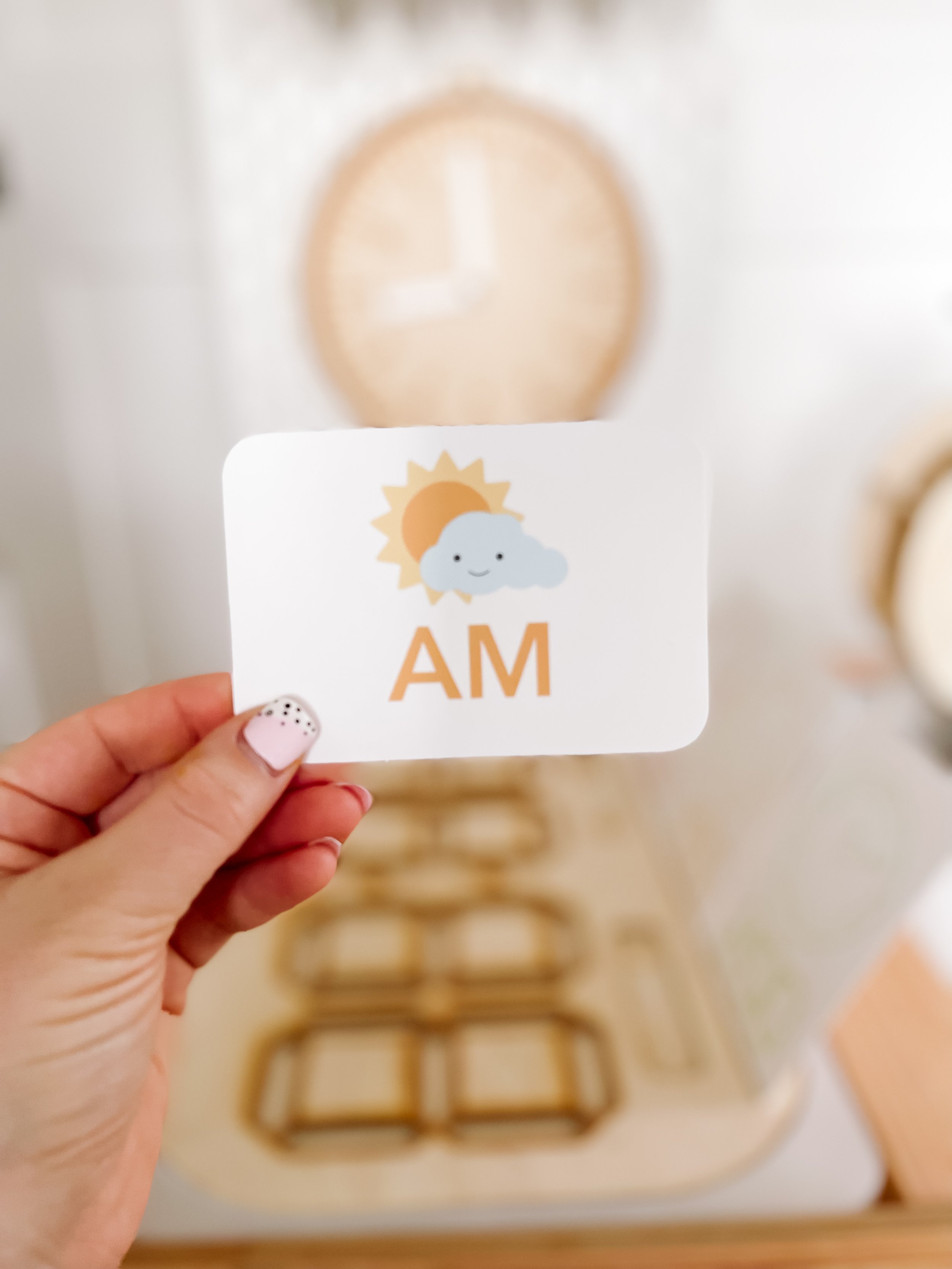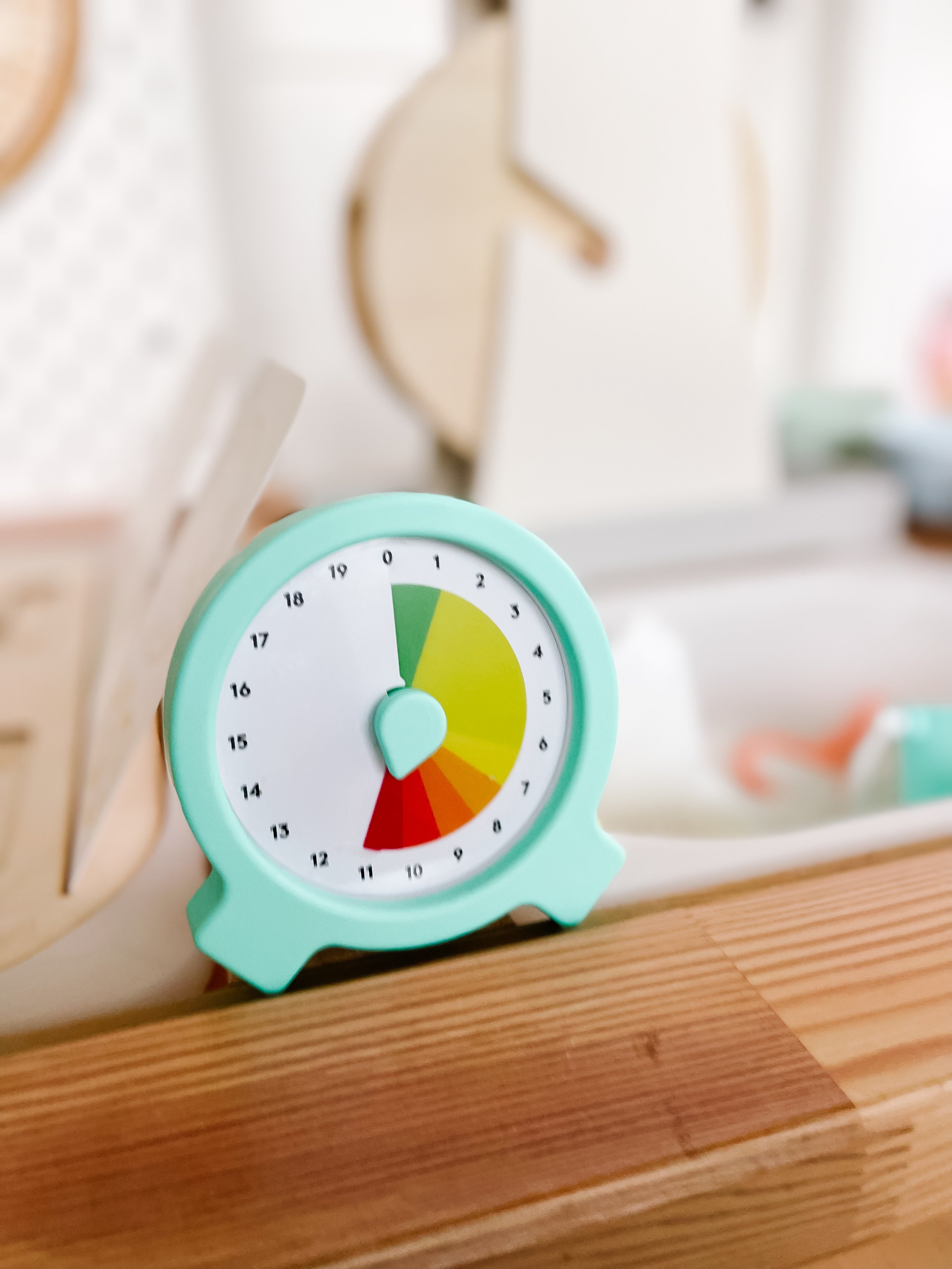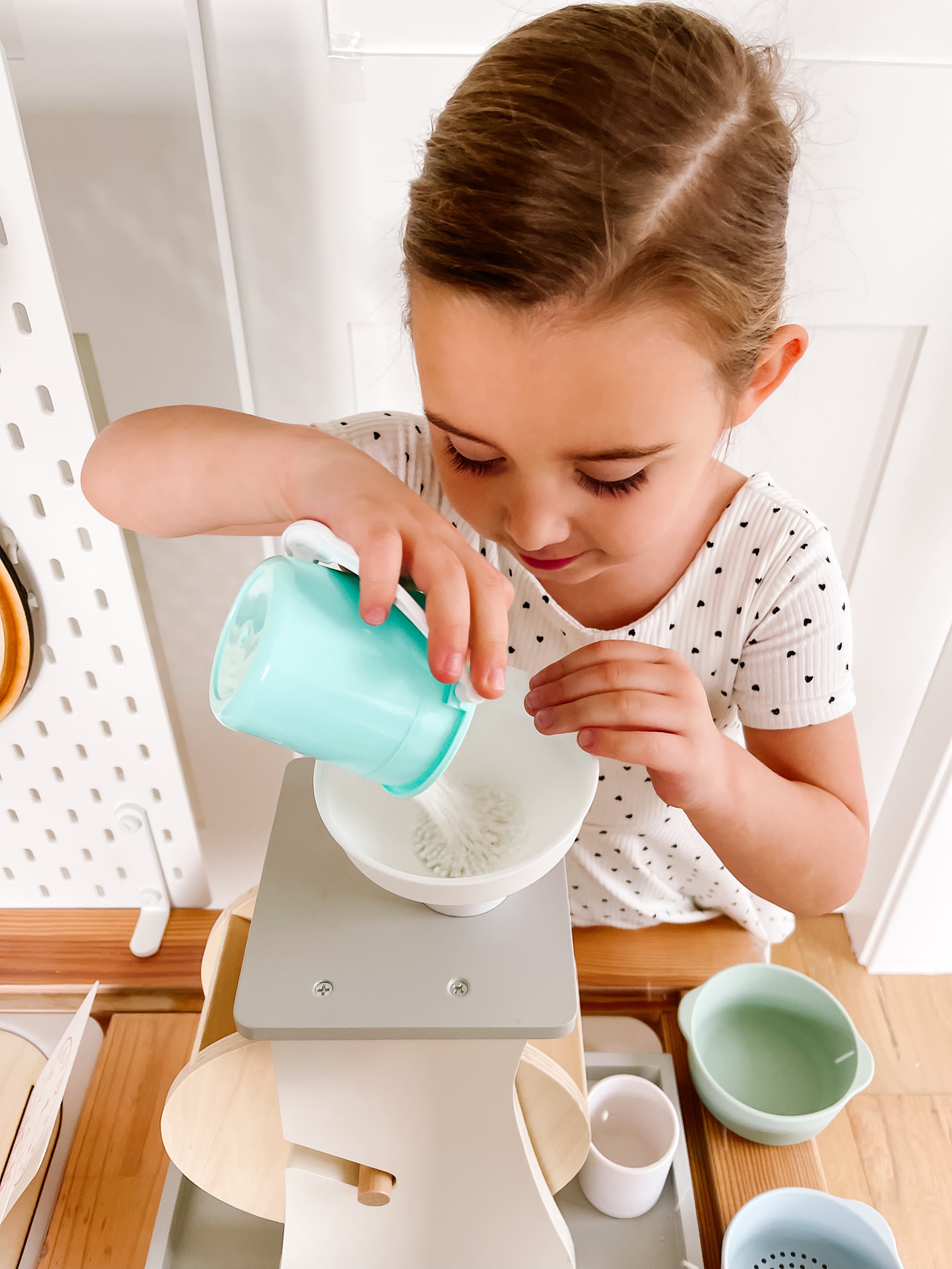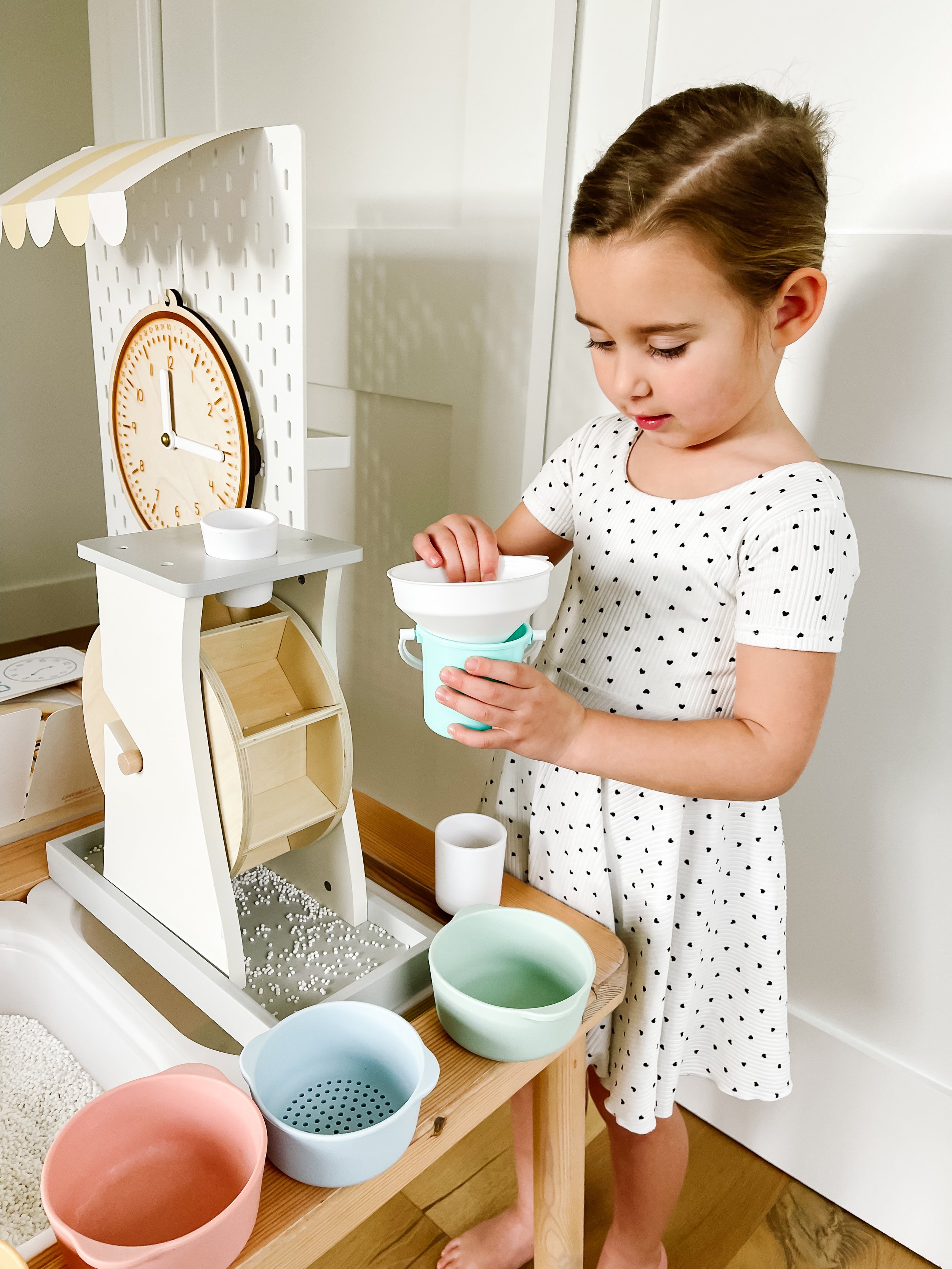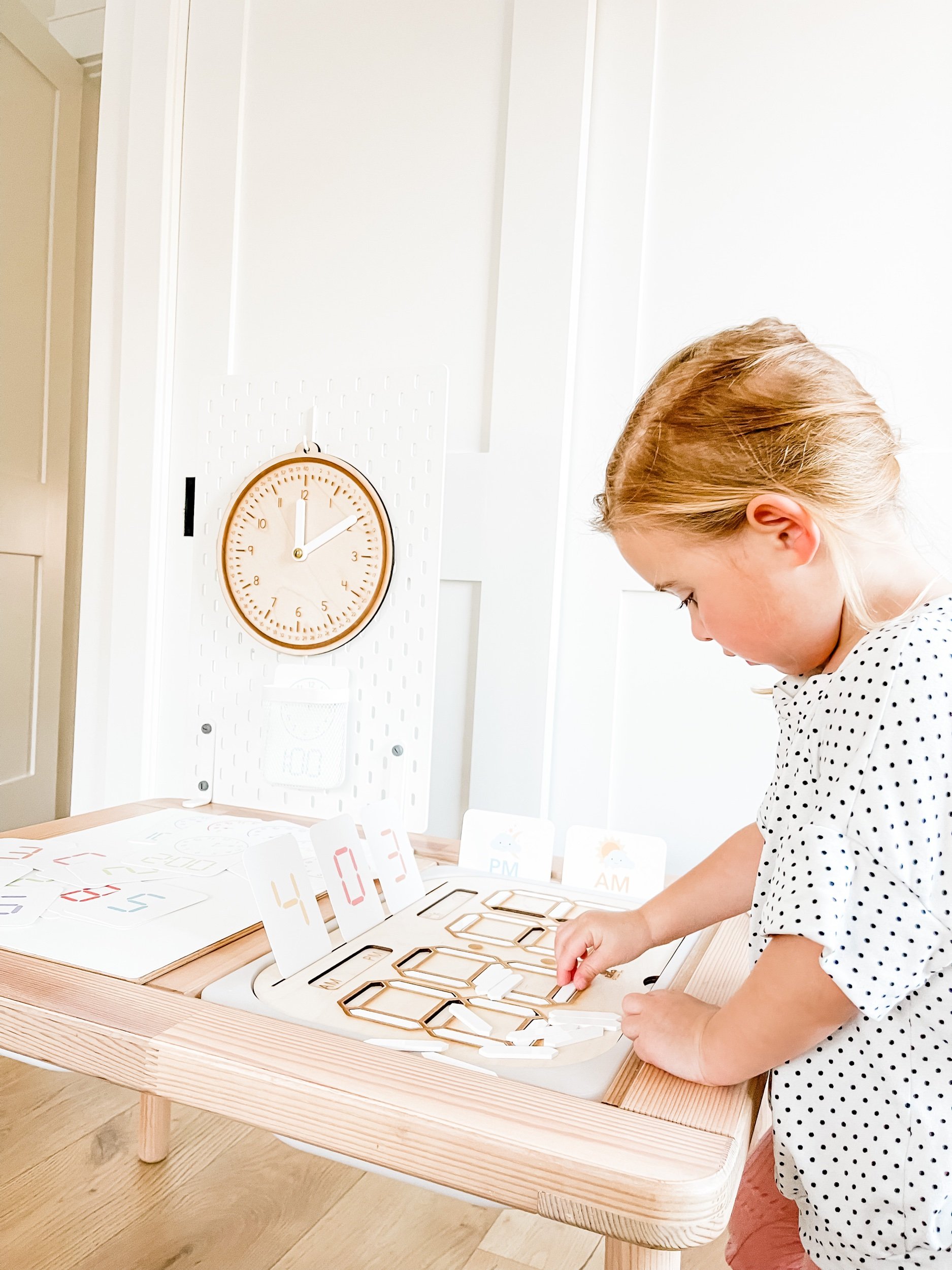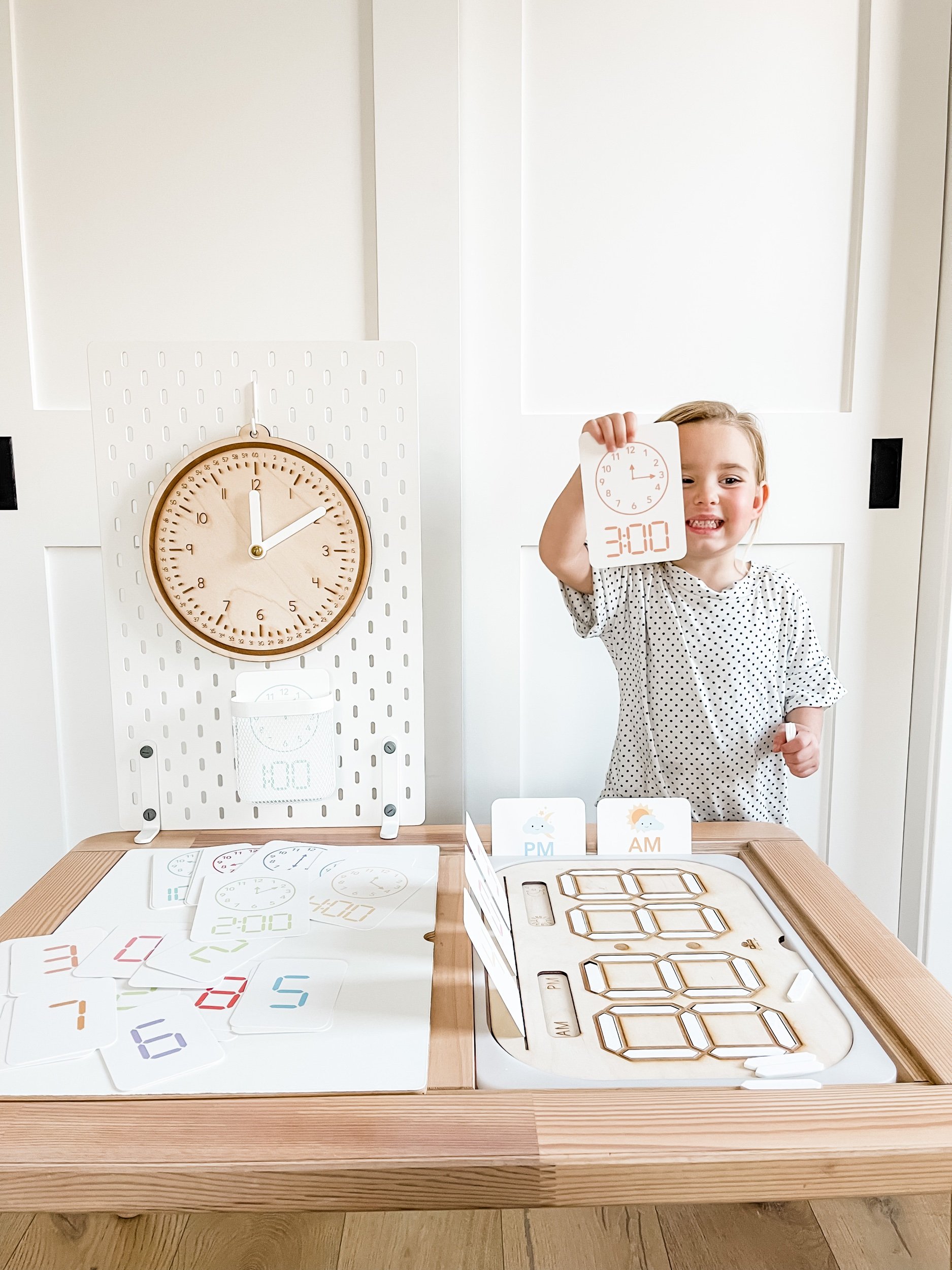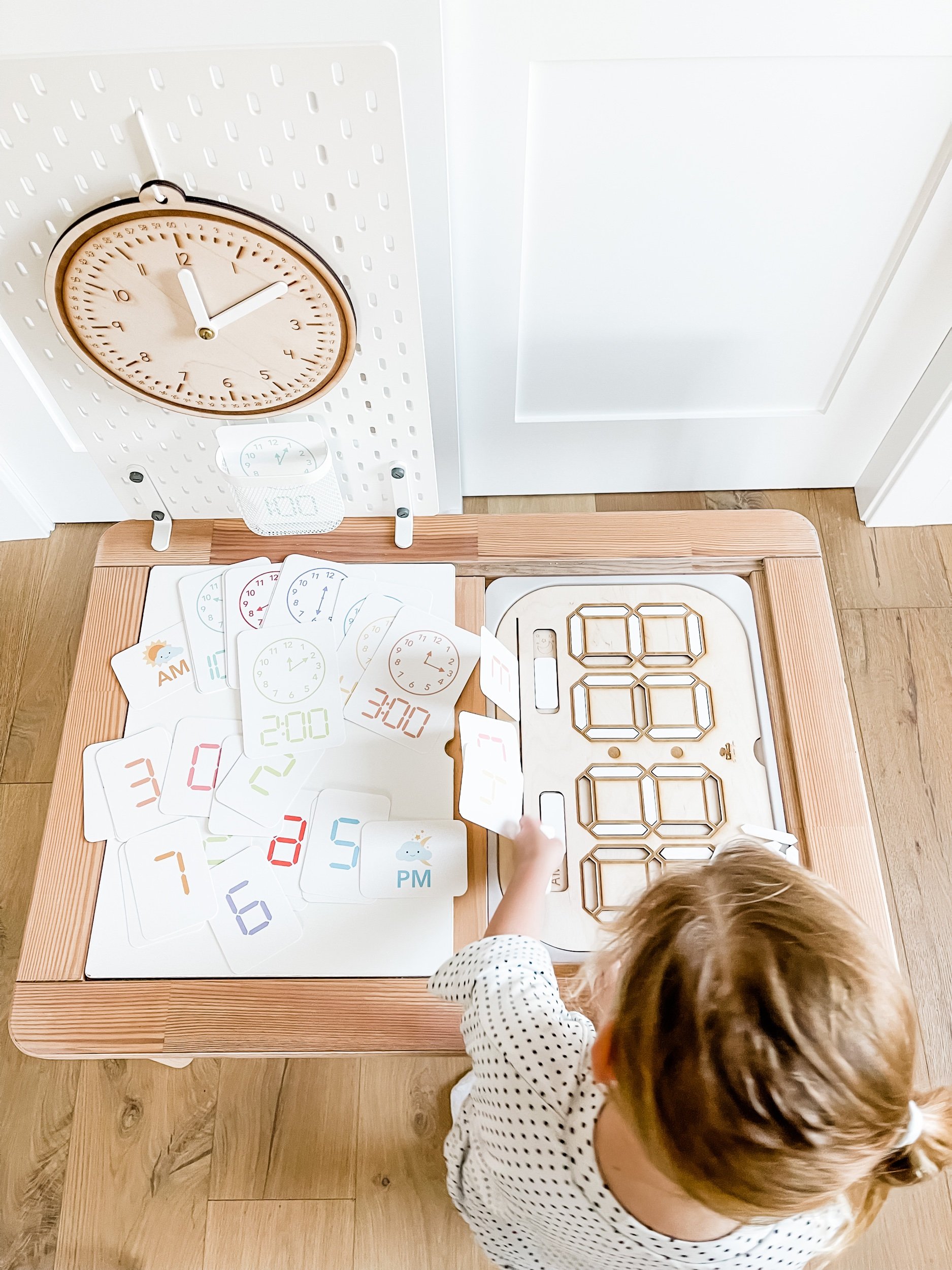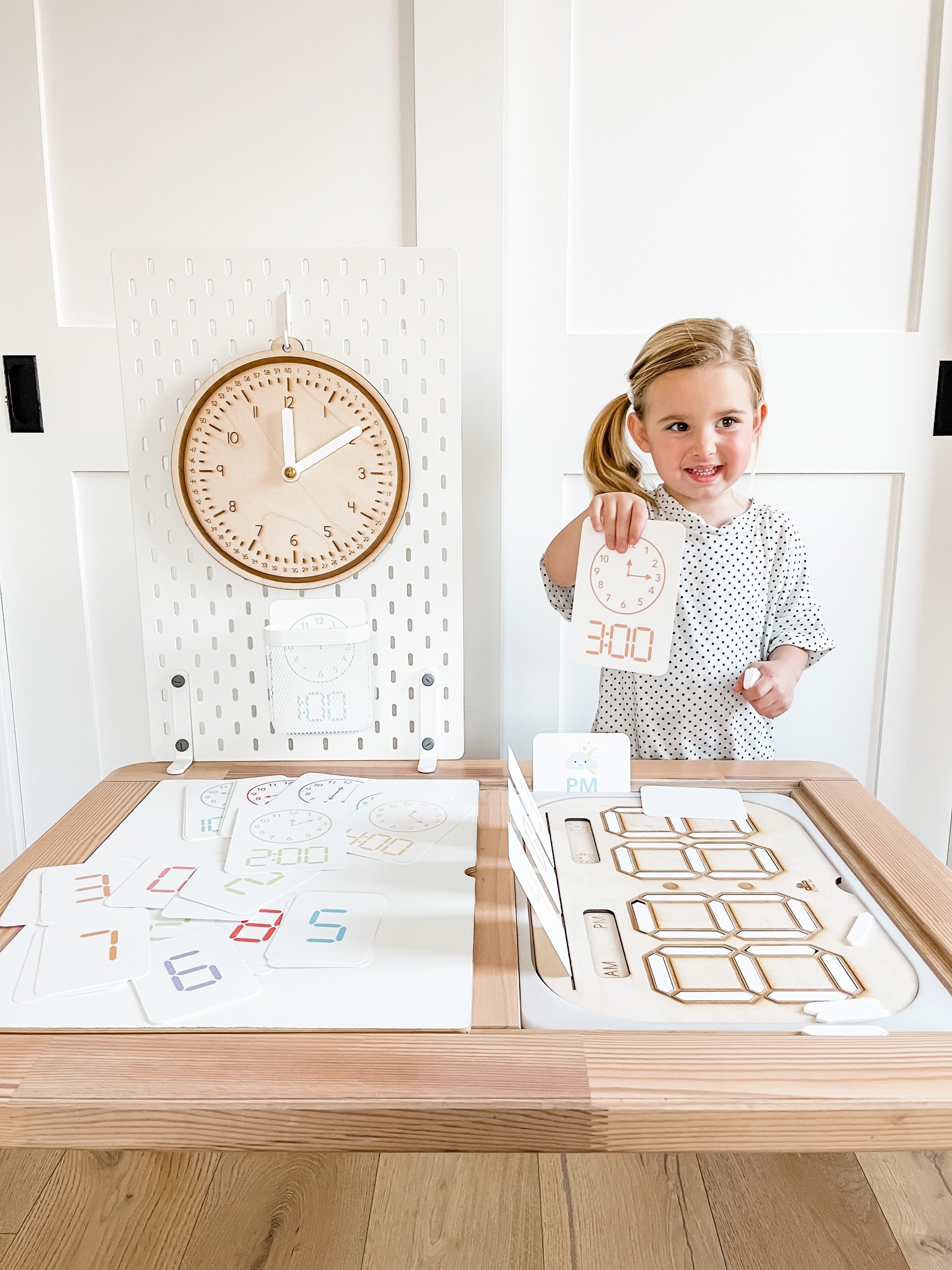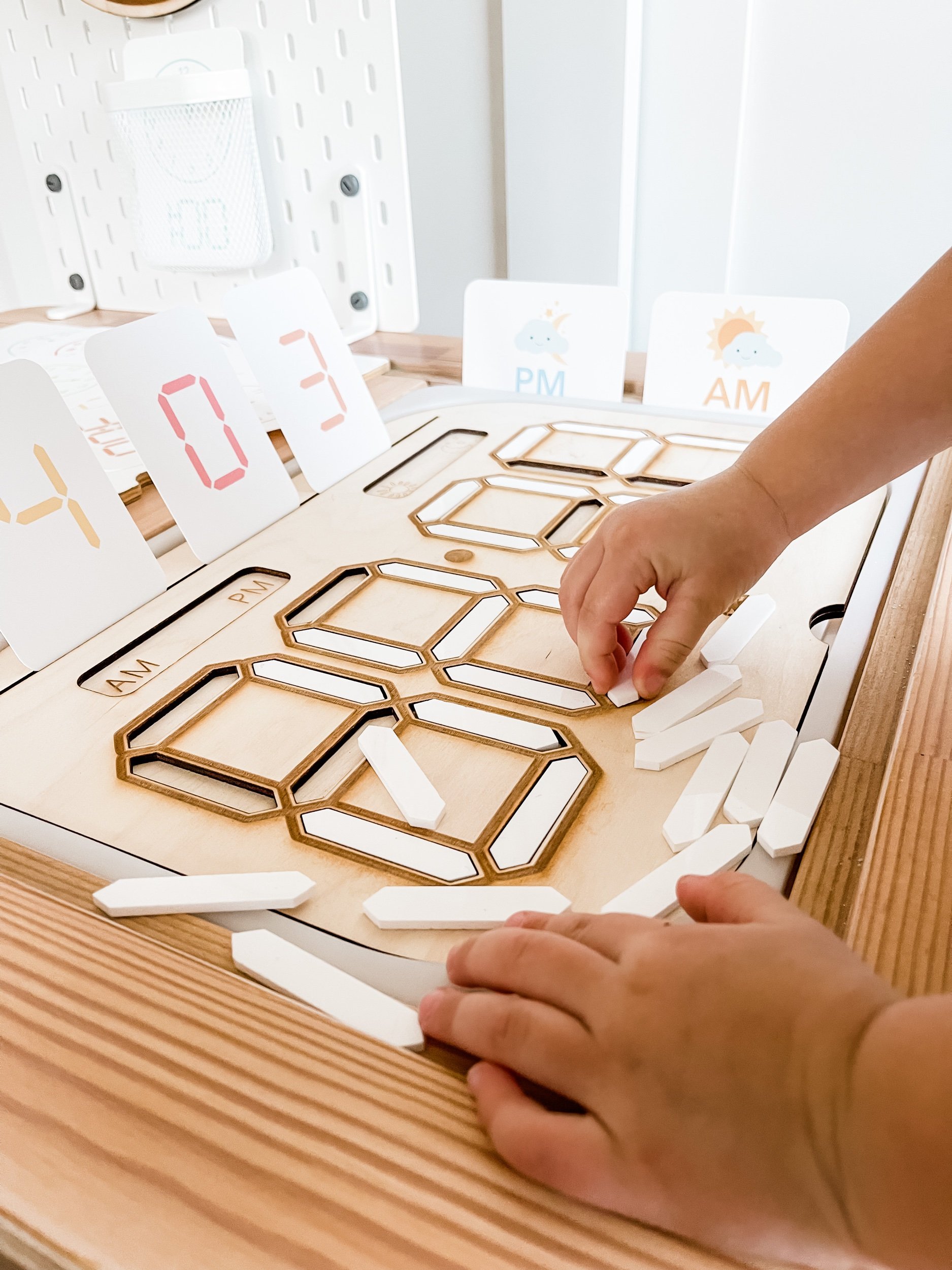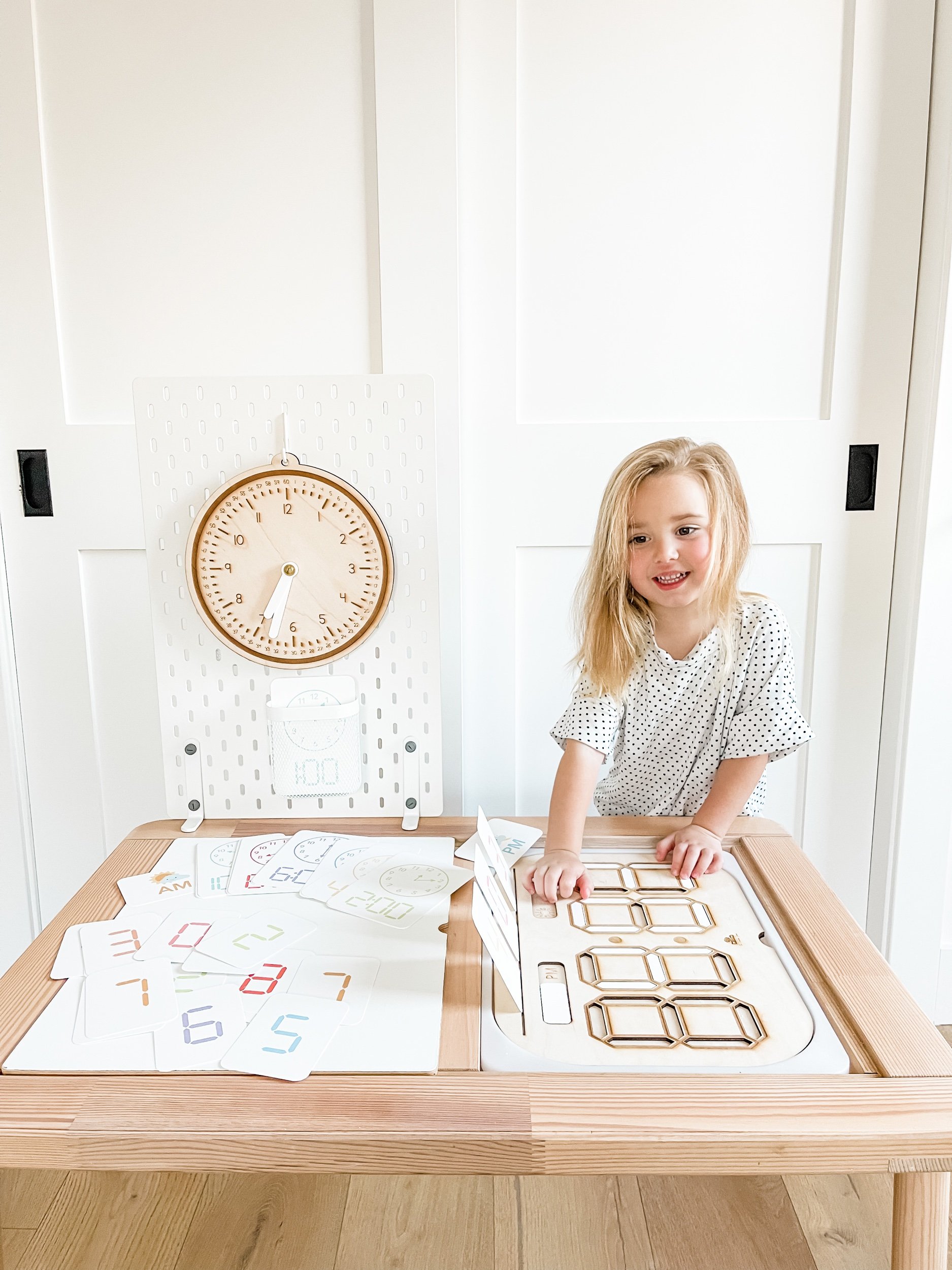It’s time to practice telling time! This topic became most salient for me when Sofie first started school and was counting down the minutes until pick up time. The teachers would tell her to wait until the clock reached the 3:00 before she’d get picked up. Flash forward to now and we’re really starting to dig into learning was the numbers and timings truly mean. It’s sparked so much interest and excitement and it’s really amazing to see her fascination with time. Here are the learning topics we’re covering:
Learning 60 seconds per minute
Learning how to count to 1 minute
Learning how long 5 minutes left is
Learning how long 10 minutes left is
Learning to tell the hour on the analog clock
Learning to tell 30min increments on the analog clock
Matching our cards with the digital clock puzzle
Learning the difference between AM and PM
Learning why it gets dark outside and why it gets light outside
Teaching Preschoolers About the Importance of Telling Time
As adults, it's easy to take for granted the skill of telling time. However, for preschoolers, understanding the concept of time can be challenging. Teaching children to tell time not only helps them with time management but also develops essential numerical and logical thinking skills. In this blog post, we'll explore three engaging sensory bin activities that are perfect for teaching preschoolers about telling time.
Time Sensory Activity 1: Water and Funnels
This sensory bin activity is perfect for toddlers aged 1-2. Fill a shallow container with water and gather a few plastic funnels of various sizes. Allow your child to explore pouring water through the funnels. As they experiment with different sized funnels, engage them in conversations about how long it takes for the water to pass through and fill different containers. This activity introduces the concept of time through observation.
TIme sensory Activity 2: Sand and Tapioca Mix
For children aged 1-2, fill a sensory bin with a mixture of sand and tapioca balls. Hide different objects partially submerged in the mixture and encourage your child to find and remove them. As they scoop, sift, and dig through the textured material, talk about the difference it makes in terms of time. How long does it take to find an object when they dig deeper into the bin? This activity helps them understand the passage of time as they engage in a hands-on exploration.
Matching Digital and Analog Clocks for Ages 3-4
Activity 3: Learning Cards for Time Matching
For preschoolers aged 3-4, introduce learning cards with both digital and analog clocks. Use our GoodnightFox Time Cards with different times displayed digitally and corresponding analog clocks. Start by matching the digital and analog cards together and name the times out loud. Encourage your child to practice reading the analog clocks and associating them with the corresponding digital time. Make the activity more interactive by demonstrating different times on an analog clock and asking your child to match the digital representation. With repetition and practice, they will build a solid foundation in telling time.
Exploring Time with Timers and Hourglasses
Activity 4: Timers and Hourglasses
To get creative with teaching about time, introduce timers and hourglasses to your preschooler. Set up various timers with different durations and ask your child to complete tasks before the time runs out. This helps them understand the concept of deadlines and managing time effectively. Additionally, hourglasses provide a visual representation of the passage of time. Encourage your child to flip the hourglass and observe how grains of sand flow from one chamber to another. Discuss how different activities take different lengths of time by comparing the hourglass counts. We used our Lovevery timer because it’s a great visual representation of the amount of time left and proceeds from green to yellow to orange to red as time runs out.
25 vocabulary words about time for toddlers:
1. Clock: A device that measures and shows time.
2. Hour: A unit of time equal to 60 minutes.
3. Minute: A unit of time equal to 60 seconds.
4. Second: The basic unit of time in the metric system.
5. Digital: A type of clock or watch that shows time using numbers.
6. Analog: A type of clock or watch that shows time using hands and a dial.
7. Face: The round surface of a clock or watch on which the numbers are displayed.
8. Numbers: The symbols used to show the hours on a clock face.
9. Hand: The pointer on a clock or watch that shows the current time.
10. Tick: The sound made by a clock or watch as it moves.
11. Tock: The sound made by a clock or watch between ticks.
12. Quarter: A period of 15 minutes.
13. Half: A period of 30 minutes.
14. Digital clock: A clock that displays the time using numbers.
15. Analog clock: A clock that displays the time using hands and a dial.
16. AM: Ante meridiem – the time from midnight to noon.
17. PM: Post meridiem – the time from noon to midnight.
18. Noon: The time of day when the sun is at its highest point in the sky.
19. Midnight: The time of day when it is 12 o'clock at night.
20. Morning: The time of day between midnight and noon.
21. Afternoon: The time of day between noon and evening.
22. Evening: The time of day between late afternoon and sleep time.
23. Night: The time of day between evening and morning when it is dark outside.
24. Digital watch: A watch that displays the time using numbers.
25. Analog watch: A watch that displays the time using hands and a dial.
These vocabulary words will help toddlers learn about time and how to tell time using both digital and analog clocks.
The Value of Learning to Tell Time
Learning to tell time is an important skill for preschoolers to develop. It enables them to manage their daily routines, understand schedules, and successfully complete tasks with time constraints. Mastering time-telling involves grasping numeracy concepts, developing logical thinking skills, and fostering a sense of responsibility. Engaging preschoolers with these fun sensory bin activities not only makes learning enjoyable but also provides a solid foundation for their time-telling abilities.
So, why wait? Dive into these activities and watch as your preschoolers become skilled timekeepers, all while having a blast along the way. Happy teaching!
Note: Always supervise children during sensory bin activities, especially those involving small objects or water.
All of these amazing learning materials were designed in collaboration with @WonderYearsShop where you can find the wooden analog clock and wooden digital clock puzzle.


